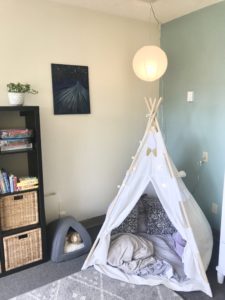seattle
I plan on normalizing conversations around therapy and mental wellness through my media outlet. Just like the way we go to a doctor for a physical check-up, we should go to a therapist for a mental check-in. It should be part of our self-care routine. The media is cluttered with tough news, and it’s easy to get bogged down by it. On top of it, we are all adjusting to this new norm of being at home. It can be challenging, for instance, to share our personal and professional space with our partner or cat(s) or dog(s) or kid(s). I’m trying to run a newsroom with a two-year old toddler hovering around me. I have definitely had some crazy days. Also, being away from friends and family is tough too. But hey, we’re all in this together! We got this. It’s all about having a positive mindset.
I asked Amber Englund, a Seattle-based licensed mental health counselor to share some coping mechanisms and methods we can adapt during this pandemic, so we we can adjust and eventually thrive during these unprecedented times. Stay home, but stay sane Seattle! Read the full interview below.
How do you think Seattle is doing in terms of mental wellness overall? What’s your general overview?
We are in a time of history that no current generation has experienced with the presence of COVID-19. I believe vague timelines and limited access to resources put people in a state of avoidance and anxiousness.
What is also unique about this particularly insecure time is that our previous methods of soothing may not be available due to stay-at-home orders and physical separation from facilities and people. We’re hence being met with big feelings amidst the absence of our known tool bag of emotional processing. This makes us discover new processes of being with our bodies and our emotional needs. I have been amazed by the digital and community creativity that has been born out of this pandemic. I believe in this global context, we have an opportunity to pause, assess, and simplify based on our individual needs. And with this, I anticipate some incredible concepts and modalities will be invented.

Tell us a little about your methods. What’s the intent behind it?
My desire as a therapist is to be with, explore, identify, and integrate what someone believed to be their plan. What is your current context needing? I do this with a developmental lens of where you’ve come from. What is happening now and where you want to be in the future. My hope is to support individuals and families to identify their unique feelings as they get stressed in a relationship. Then to take these cues and reframe them as signals of a social and emotional need in moments of frustration and contempt for ourselves and others. I believe that we can make room for our own feelings and those of others equally with value for the similarities and differences.
With this new norm of working from home, which mindful practices do you suggest people incorporate in their daily routines?
I recommend that we find new ways to connect with our bodies. Before coronavirus, you may have developed stress-reduction practices such as going to yoga, lifting weights, reading, or activities with friends.
In the current environment, it is essential to slow down and be present in our bodies. But we need to find creative home practices that are simple and available. I have been increasing the use of candles, diffusers, and incense. The sense of smell reminds us to be present, breathe deeply, and pause. Instead of going to the gym, let us explore yoga and other exercise videos. We are in a time when we may not be able to replicate what life was before. However, we can engage in the opportunity to reflect on what it is that we need and creatively produce a rhythm or practice that meets our unique need.

There is a lot of coronavirus news flooding the media today, coupled with the global economic and health crisis as we head towards a global recession. What’s your advice to people when watching the news?
Although this is a global pandemic, that does not mean that there will be a uniform response with each family nor individual. My recommendation is we support each other in identifying what we’re uniquely feeling and needing; to express ourselves without assuming the same feeling and need is present with your audience.
As we practice social distancing – six feet of separation for some and complete physical separation for others – let us respect each others’ choices while following the local guidance of our officials. There is a flooding of information locally, nationally, and globally. Be wise in your consumption. Be aware of the news that is locally impacting you and your family. For those that soothe from information gathering, be mindful of setting a time each day to update yourself rather than exposing yourself to constant updates. In a season when status can be changed in a day, let us gather, assess, and inform daily to allow for ourselves and loved ones to be in the moment together, then reassessing as the next day comes.
Households have become schools, offices, and daycare overnight. What is your advice to parents trying to manage academics, work, and entertainment under one roof?
Parents are carrying compounded stress at this time, with schools being closed and varying access to education programs online. I challenge you to not take on the ‘this is what I should be doing’ identity as the new parent-teacher-principal-specialist and coach. Pause and think about what you need. Maybe you are a family that needs to write a new family home schedule of work/school and order of events. Perhaps you are a family that needs to post a menu of options, and each evening you discuss the plan for the next day. All this to say, your context is unique. There is no uniform method of how this should be done. Call your friend, neighbor, or therapist and ask for support in problem-solving and figuring out a new norm. Many therapists have switched to online platforms. If you haven’t considered counseling before, this may be a good time. Because this is not normal.

Many partners are now working in their ‘make-shift’ home offices. There may be conflicts within family dynamics to get their ‘personal’ and ‘professional’ space. What solution do you have in mind?
I encourage transparency. You may not have communicated your plans with the kids at home or what you’re doing at the office to your partner previously, but now is a time for increased acknowledgment and mutual understanding of each other’s plans and needs in the day and week. Without acknowledging what you need and feel could result in increased criticism and defensiveness between you and your partner. Without transparency of how you’re feeling, bitterness hand frustration increase because the needs are not inferred. It may feel excessive at first, but the more space and time that is shared, the greater need there is for shared communication and understanding.
To learn more about Amber’s practice, click here.
